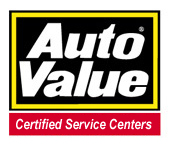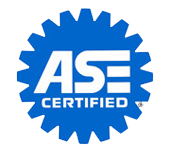
Archive for September 2020Follow the Bouncing Vehicle (Bad Struts and Shocks)Posted September 27, 2020 1:11 AMPlease wait while the video is loading... If you hit a bump in the road and your vehicle just keeps bouncing up and down for a lot longer time than it used to, you may have bad struts and shocks. They're the things that help to keep your vehicle's wheels and tires planted to the road surface. But they don't last forever. With care and depending on where and how you drive, shocks and struts should be replaced at intervals ranging from 50,000 miles/80,000 km to 100,000 miles/160,000 km. If you drive on bumpy roads with a lot of potholes, that interval will likely be shorter. Rough surfaces can take their toll. But how do you know if your shocks and struts are doing their job properly? The best way is to have your vehicle checked by a technician. He or she can inspect the shock absorbers and struts for leaks, corrosion and damage. Mounts and bushings can also go bad and they should be evaluated as well. A thorough examination by a technician will also include looking at other suspension parts. Some may contribute to making your vehicle behave the same way if they're broken, corroded, worn or bent. If you need new shocks and struts, your service advisor will make sure that you get those that meet manufacturer's specifications. That's important because they want to make sure you're getting the handling and performance engineers designed your vehicle to have. Brake World Start Me Up (Ignition Systems)Posted September 20, 2020 2:35 AMWhen you start up your gasoline engine car, you may not know that it's using the same ignition principles as it has for decades. You have spark plugs that require enough power so a spark can jump across a gap at its tip. Years ago, a vehicle's 12-volt system had to produce 15,000-25,000 volts to do that, so engineers came up with something called an ignition coil that bumps up the voltage. It also has to be done at just the right interval called timing. The first systems had a distributor, a mechanical device with a rotating disc that switched the power to the ignition coil on and off. That higher voltage then was sent to the spark plugs at the correct time interval. But the mechanical "points" had to be replaced and adjusted every 12,000 miles/20,000 kilometers. Engineers later replaced the switching mechanism with solid state ones, but they still needed replacement after 120,000 miles/200,000 kilometers. The next evolution came in the 80's when the distributor was replaced with a couple of sensors which talked to a computer. This "DIS" (distributor-less automotive ignition system) was a big advance. Plus, it didn't use just one ignition coil for all the cylinders. It had coil "packs" that each provided spark to two cylinders. That way, the voltage could be boosted even higher, to 30,000 volts, which helped engines be able to ignite a leaner fuel/air mixture. Recently have come even more improvements. Now instead of coil packs, there's a coil that's attached to each spark plug. No more spark plug wires means less maintenance. Plus, a stronger, hotter spark of 50,000 volts can make an engine more reliable, increase fuel economy and reduce emissions. No matter what ignition system your vehicle uses, your vehicle service facility has a staff of technicians trained to work on the latest technology. Make sure to have your vehicle maintained regularly so you can take full advantage of these modern engineering marvels. Brake World Some New Boots (Suspension Maintenance)Posted September 6, 2020 9:46 AMThere are some boots that don't come in a shoe box and aren't worn on your feet. They are called axle or CV boots, and they can be important parts for many vehicles. That CV stands for constant velocity. CV axles are mainly used in front-wheel drive and all-wheel drive vehicles. They're also used in some rear-wheel drive vehicles with independent suspensions. They have two CV joints, one inner and one outer, placed between the axle and the drive wheels. That way the vehicle's engine power can drive the wheels, no matter what angle they are. They also adjust for the different speeds wheels turn as they go around corners. Because roads are full of all sorts of hazards (dirt, oil, water, grime), these CV joints need to be protected. They also have grease in them to keep the bearings moving smoothly. That's the job of the rubber boots that are supposed to keep that debris out. These CV or axle boots are made of rubber or plastic and usually last a long time without any problem. But sometimes they fail, either from being hit by debris or age causing the rubber or plastic to deteriorate. That can allow the grease to leak out of the joint and the moisture to get in. And that's where the trouble is. So it's important to have a vehicle's CV boots checked periodically, especially when they begin to have more than 100,000 miles/160,000 kilometers on them. A technician inspects them for tears or cracks. Sometimes if the problems are found early enough, the boots can be replaced and the joints can be re-packed with grease. But sometimes the CV joint can wear out even though the boot is intact. When the CV joint fails, you might hear a grinding, humming or clicking noise and feel vibration. Some of these can be difficult to access for service, so many service advisors will recommend replacing the joints and boots at the same time. Just remember, new CV boots won't make a fashion statement, but they will keep your vehicle going down the road for years to come. Brake World | ||
SearchArchiveNovember 2018 (16)December 2018 (5) January 2019 (5) February 2019 (4) March 2019 (5) April 2019 (4) May 2019 (4) June 2019 (5) July 2019 (4) August 2019 (4) September 2019 (5) October 2019 (4) November 2019 (4) December 2019 (5) January 2020 (5) February 2020 (4) March 2020 (5) April 2020 (4) May 2020 (5) June 2020 (4) July 2020 (4) August 2020 (5) September 2020 (4) October 2020 (4) November 2020 (5) December 2020 (4) January 2021 (6) February 2021 (4) March 2021 (4) April 2021 (4) May 2021 (5) June 2021 (4) July 2021 (4) August 2021 (5) September 2021 (4) October 2021 (5) November 2021 (4) December 2021 (4) January 2022 (6) February 2022 (4) March 2022 (4) April 2022 (4) May 2022 (5) June 2022 (4) July 2022 (5) August 2022 (4) September 2022 (4) October 2022 (5) November 2022 (4) December 2022 (4) January 2023 (5) February 2023 (4) March 2023 (4) April 2023 (5) May 2023 (4) June 2023 (4) July 2023 (5) August 2023 (4) September 2023 (4) October 2023 (5) November 2023 (4) December 2023 (5) January 2024 (5) February 2024 (4) March 2024 (5) April 2024 (4) May 2024 (4) June 2024 (5) July 2024 (4) August 2024 (4) September 2024 (5) October 2024 (4) November 2024 (4) December 2024 (5) January 2025 (4) February 2025 (4) March 2025 (4) | CategoriesFuel Economy (6)Maintenance (8)Brakes (10)Timing Belt (2)Fluids (5)Battery (9)Headlamps (3)Alternator (4)What Customers Should Know (44)Cooling System (5)Service Standards (3)Customer Detective Work (1)Check Engine Light (2)Service Intervals (1)Exhaust (3)Fuel Saving Tip: Slow Down (1)Suspension (1)Shocks & Struts (2)Alignment (3)Winter Prep (2)Oil Change (5)Tires (7)Windshield Wipers (1)Safety (2)Air Conditioning (5)Automotive News (2)Older Vehicles (1)Drive Train (2)Wheel Bearings (1)Steering (3)Cabin Air Filter (1)Transmission (1)Tire Rotation and Balancing (2)TPMS (2)Brake Service (3)Auto Safety (1)Keys to a long lasting vehicle (1)Safe Driving (1)Shocks and Struts (2)Fuel System (1)Tires and Wheels (1)Transfer Case Service (1)Dashboard (1)Inspection (2) | |
What our clients are saying about us
We have established longterm and stable partnerships with various clients thanks to our excellence in solving their automotive needs!
I was able to come off the street and get an oil change without an appointment. Very impressed with the service and quick turn-around time. I will definitely come back for future oil changes.
I went to there today, without an appointment, they took me right in immediately. I also told them that the pump for my window washer was not functioning, and he said he would check it out as well. They did the oil change, replace the oil filter, and the mechanic spent about a half hour under the hood, exposing the tubing that had been broken, and repaired it. The final bill was $39.39, no charge to repair the hose for the windshield wiper. Fantastic and prompt service. I will go to them from now on and recommend them to others!














